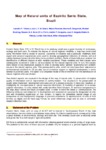Use este identificador para citar ou linkar para este item:
http://biblioteca.incaper.es.gov.br/digital/handle/item/347| Título: | Map of Natural units of Espirito Santo State, Brazil. |
| Autor(es): | FEITOZA, L. R.  CASTRO, L. L. F. de.   RESENDE, M.   ZANGRANDE, M. B.   STOCKING, M.   BOREL, R. M. A.   FULLIN, E. A.   CERQUEIRA, A. F.   SALGADO, J. S.   FEITOZA, H. N.   STOCK, L. A.   DESSAUNE FILHO, M.   Leandro Roberto Feitoza, Incaper; Lucio Livio Froes de Castro, Incaper; Mauro Resende, Universidade Federal de Viçosa; Moema Bachour Zangrande, Incaper; Michael Stocking; Rosana Maria Altoé Borel, Incaper; Eli Antonio Fullin, Incaper; Aladim Fernando Cerqueira, EMCAPER; José Sérgio Salgado, Incaper; Hideko Nagatani Feitoza, Incaper; Lorildo Aldo Stock, Universidade Presidente Antônio Carlos; Milton Dessaune Filho.   |
| Palavras-chave: | Espirito Santo State Brazil Map Natural regional variability Geographical indicators Natural units of Espirito Santo State |
| Data do documento: | 10-Abr-2014 |
| Editor: | Enschede, Holanda, NL : International Institute for Aerial Survey and Earth Sciences. |
| Descrição: | Espirito Santo State (ES) in SE Brazil has in its relatively small area a great diversity of landscapes, ecology and land uses. To indicate the degree of natural regional variability, a map was constructed using information from a variety of sources. Clustering of variables was a particular challenge. Both expert and personal experiences were used to develop geographical indicators of climate, soil and relation between humans & other living forms and land condition. Some of these indicators assisted the identification of different classes of each variable considered. These variables and their classes were subsequently clustered in order to set boundaries for the natural regional units. In turn, the classes were related to key biophysical aspects in order to develop some ?genetic? relationship with problem issues in the natural regional units. This process led to units, which not only have direct relevance to environmental conditions in ES but also are of immediate support to regional development in terms familiar to potential users. The option of a simplified model of the environment for the identification of natural regional units was chosen. Two distinct aspects are involved in the design of the map of natural units: 1) preservation of original quality of information and 2) improvement in communication. Five situations in the preservation of quality were challenged: development and execution of a process involving 1) many key variables; 2) intelligibility for non-specialists in natural resource information; 3) flexibility of operation to re-access original information; 4) units related with easily identified field indicators. 5) technical transparency in the map about criteria and basic principles used. In order to meet the needs of communication, the following attributes were important: 1) development and execution of a process for designation of units and with immediate explanation of their content; 2) legend for immediate mental image of unit irrespective of user background, language or previous experience; 3) representation of units at both formats (a) digital and (b) hard copy format, for areal references (map) and (c) also in schematic diagram (decision tree). |
| URI: | http://localhost:8080/digital/handle/item/347 http://biblioteca.incaper.es.gov.br/digital/handle/item/347 |
| ISSN: | 0303-2434 |
| Aparece nas coleções: | Memória Técnica do Incaper  |
Arquivos associados a este item:
| Arquivo | Descrição | Tamanho | Formato | |
|---|---|---|---|---|
| 51.pdf | 189,35 kB | Adobe PDF |  Visualizar/Abrir |
Os itens no repositório estão protegidos por copyright, com todos os direitos reservados, salvo quando é indicado o contrário.
